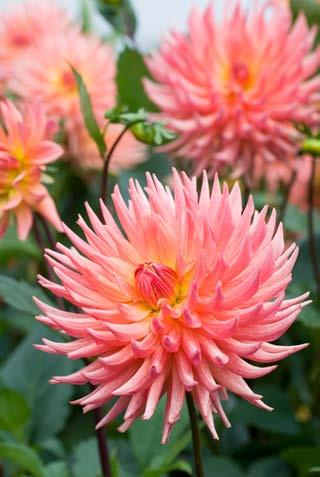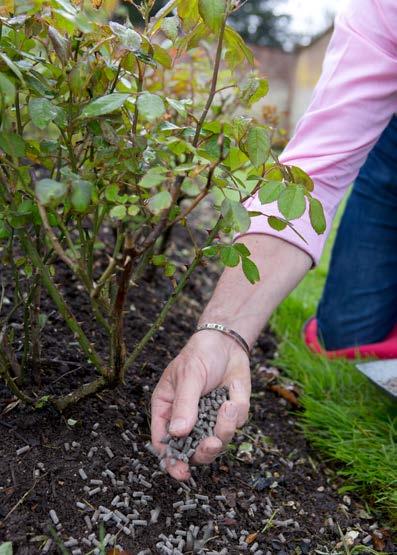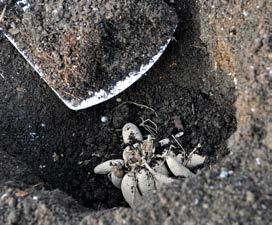
3 minute read
Pull the clump apart into several smaller pieces or
In your flower patch
Give plants a boost
If any of your shrubs and perennials flowered poorly last year, perk them up with a dose of granular or liquid fertiliser. Granular feeds cost less and can be sprinkled around the base of the plant and watered in. Always follow the dosage instructions on the packet, as overuse of fertiliser may damage plants. Give roses a specific rose feed, while lime-hating plants such as camellias and azaleas need an ericaceous feed.
Prick out seedlings

Pick off lily beetles

Be on the alert for bright-red lily beetles on fritillaries and Solomon’s seal, both of which provide an early source of food for the overwintered adult beetles. These lay eggs that will quickly hatch into larvae, which in turn will become adult beetles that will lay eggs on your summer lilies.
The vibrant-red adults are easy to spot, but the small eggs can easily be missed. They are russet brown in colour and laid in short chains. Also look out for black, squidgy masses on the leaves, under which the larvae hide. Remove the adults, eggs and larvae by hand.
Deadhead daffodils once the flowers fade, so plants put all their energy back into the bulb. QUICK & EASY
Plant out sweet peas
Young sweet peas can be planted outdoors in their flowering positions now. Harden them off for a few days first. Choose a sunny spot at the base of a trellis or wigwam and dig well-rotted manure or garden compost into the soil. If you’ve grown the seedlings singly, transfer directly into the planting hole. If lots of seedlings are growing in the same pot, carefully split into groups of two or three and plant together. Water in well and tie the stems to the support.

LOOK OUT FOR aphids as they can multiply very quickly. They feed on plant sap, distorting or stunting growth. Check shoot tips and all over leaves regularly. Squish them by hand, spray with soapy water or simply pinch out infested shoots.
20 gardenersworld.com • Gardening Planner Seedlings in trays need to be pricked out once they have their first true leaves. Replant them singly into a new tray, spaced further apart. This gives them more room to grow healthily, as well as fresh compost full of nutrients. They can also be positioned deeper in the new compost, to create sturdier plants.

Plant 12 seedlings in a half-sized seed tray. Place it in a warm, well-lit spot and keep the compost damp. As the seedlings grow, pinch out the tips to make them bushier, for more flowers. Pot on into individual modules after a few weeks, and the plants will be ready to use in borders and container displays by early summer.
Grow dahlias from tubers

In midsummer, garden centres are full of vibrant dahlias for instant colour. But you can save pounds i f you buy tubers now and plant them straight into your borders. Add garden compost to the hole and keep watering, and they’ll send up shoots in a few weeks. Protect young growth from slugs and you’ll have glorious blooms right through to autumn.
1Gently lift one seedling at a time, using a dibber to lever out as many of the roots as possible. Always hold seedlings by a leaf, not the stem, as this is easily crushed, which would kill the seedling.
2Fill a half-sized seed tray with multi-purpose compost, then level and gently firm the surface. Set the two seed trays side by side, dib a deep hole for the first seedling and lift it across.
3Carefully lower the seedling into its new hole, almost to the base of the leaves. Firm it in gently. Repeat until you have filled the tray with seedlings.
4Thoroughly wet the compost with tepid water from a watering can with a fine rose. Label the tray with the plant name, then place in a greenhouse or on a bright windowsill to grow on.



